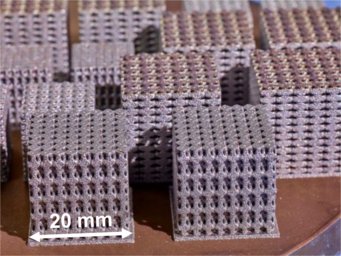Additive manufacturing of tungsten components
Complex shaped tungsten components can be produced with novel additive manufacturing processes
The preferred plasma-facing material in present-day and future magnetic confinement fusion devices is tungsten – because of its high threshold energy for sputtering as well as its low retention of hydrogen. From an engineering point of view, however, tungsten is a challenging material to work with as it is an inherently hard and brittle metal. In this respect, established fabrication and machining technologies for tungsten are a limiting factor directly affecting the design of plasma-facing components.

Against this background, additive manufacturing (AM) technologies for tungsten are being investigated. They offer flexibilities beyond the possibilities of conventional manufacturing methods. AM comprises manufacturing processes in which three-dimensional objects are created by means of sequential deposition of layers under computer control. They allow parts with high geometrical complexity to be realised straightforwardly. In this context, the AM of tungsten by means of laser powder bed fusion (LPBF) is being investigated by members of the Plasma Component Interaction group. The figure shows tungsten lattice structures manufactured by means of LPBF and illustrates the capabilities of such an AM process with respect to the fabrication of complexly shaped tungsten objects.
